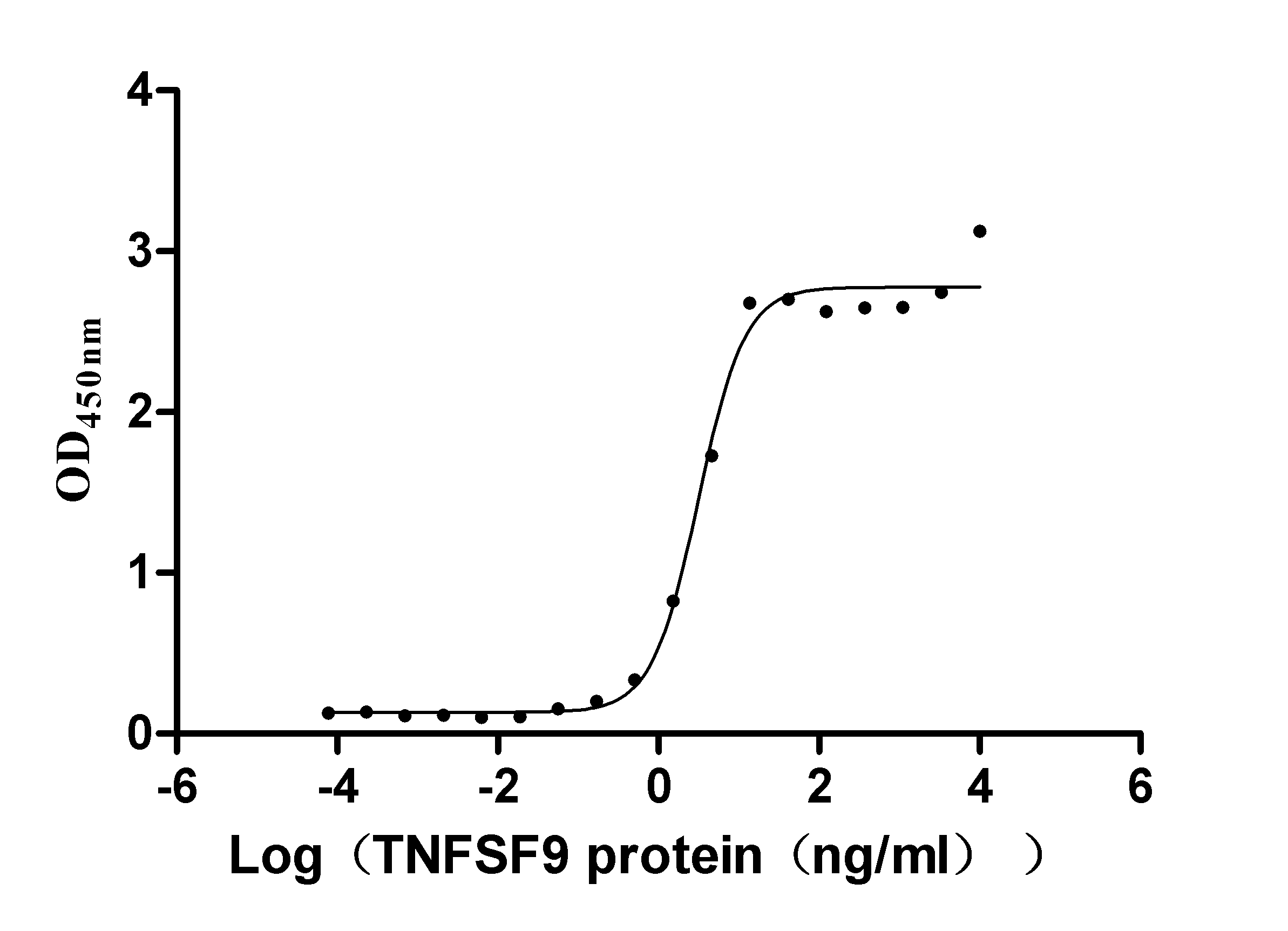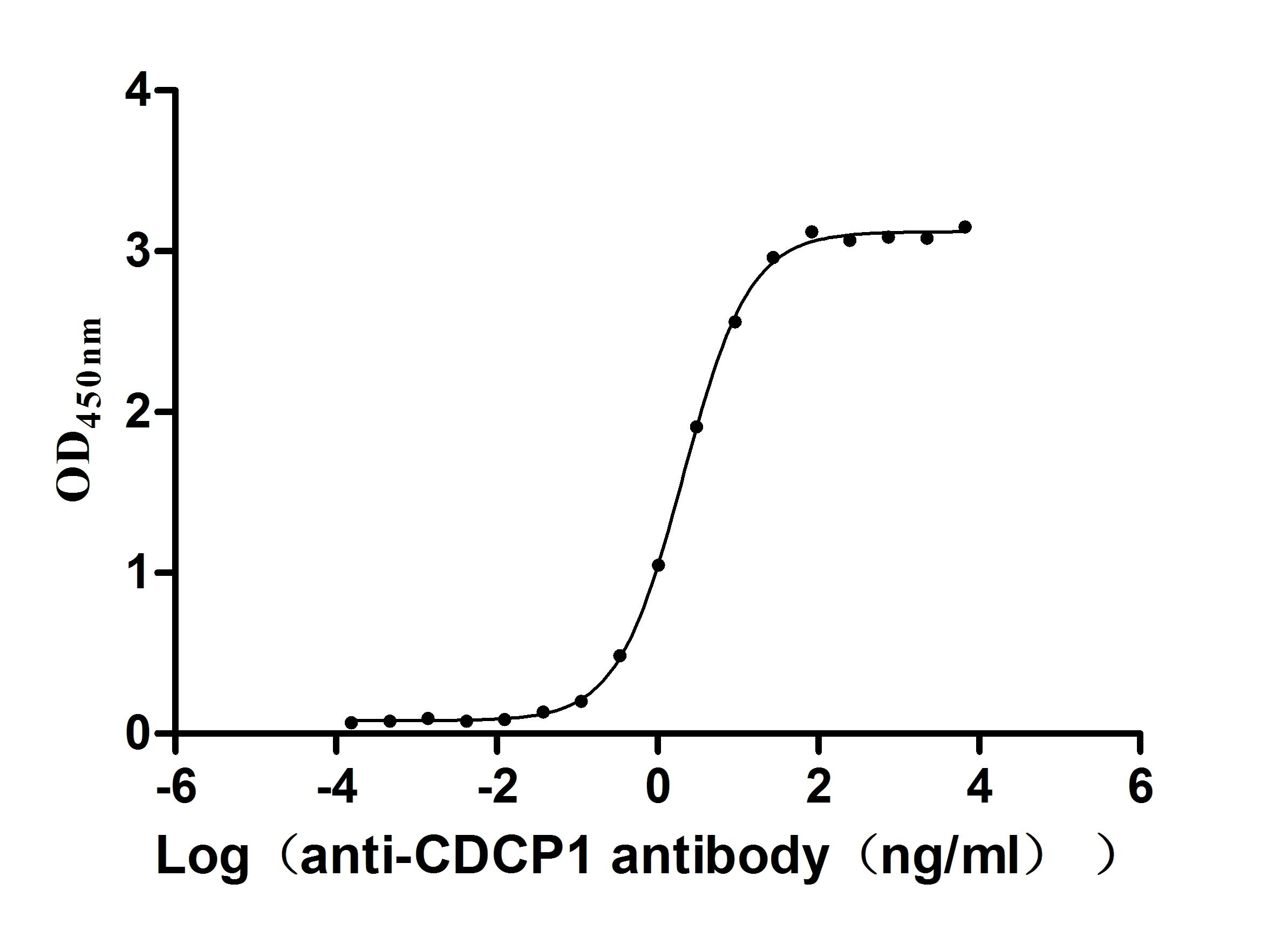Recombinant Human Tumor suppressor candidate 3 (TUSC3), partial
-
货号:CSB-YP025352HU1
-
规格:
-
来源:Yeast
-
其他:
-
货号:CSB-EP025352HU1
-
规格:
-
来源:E.coli
-
其他:
-
货号:CSB-EP025352HU1-B
-
规格:
-
来源:E.coli
-
共轭:Avi-tag Biotinylated
E. coli biotin ligase (BirA) is highly specific in covalently attaching biotin to the 15 amino acid AviTag peptide. This recombinant protein was biotinylated in vivo by AviTag-BirA technology, which method is BriA catalyzes amide linkage between the biotin and the specific lysine of the AviTag.
-
其他:
-
货号:CSB-BP025352HU1
-
规格:
-
来源:Baculovirus
-
其他:
-
货号:CSB-MP025352HU1
-
规格:
-
来源:Mammalian cell
-
其他:
产品详情
-
纯度:>85% (SDS-PAGE)
-
基因名:
-
Uniprot No.:
-
别名:TUSC3; N33; Tumor suppressor candidate 3; Dolichyl-diphosphooligosaccharide--protein glycosyltransferase subunit TUSC3; Oligosaccharyl transferase subunit TUSC3; Magnesium uptake/transporter TUSC3; Protein N33
-
种属:Homo sapiens (Human)
-
蛋白长度:Partial
-
蛋白标签:Tag type will be determined during the manufacturing process.
The tag type will be determined during production process. If you have specified tag type, please tell us and we will develop the specified tag preferentially. -
产品提供形式:Lyophilized powder
Note: We will preferentially ship the format that we have in stock, however, if you have any special requirement for the format, please remark your requirement when placing the order, we will prepare according to your demand. -
复溶:We recommend that this vial be briefly centrifuged prior to opening to bring the contents to the bottom. Please reconstitute protein in deionized sterile water to a concentration of 0.1-1.0 mg/mL.We recommend to add 5-50% of glycerol (final concentration) and aliquot for long-term storage at -20℃/-80℃. Our default final concentration of glycerol is 50%. Customers could use it as reference.
-
储存条件:Store at -20°C/-80°C upon receipt, aliquoting is necessary for mutiple use. Avoid repeated freeze-thaw cycles.
-
保质期:The shelf life is related to many factors, storage state, buffer ingredients, storage temperature and the stability of the protein itself.
Generally, the shelf life of liquid form is 6 months at -20°C/-80°C. The shelf life of lyophilized form is 12 months at -20°C/-80°C. -
货期:Delivery time may differ from different purchasing way or location, please kindly consult your local distributors for specific delivery time.Note: All of our proteins are default shipped with normal blue ice packs, if you request to ship with dry ice, please communicate with us in advance and extra fees will be charged.
-
注意事项:Repeated freezing and thawing is not recommended. Store working aliquots at 4°C for up to one week.
-
Datasheet :Please contact us to get it.
相关产品
靶点详情
-
功能:Acts as accessory component of the N-oligosaccharyl transferase (OST) complex which catalyzes the transfer of a high mannose oligosaccharide from a lipid-linked oligosaccharide donor to an asparagine residue within an Asn-X-Ser/Thr consensus motif in nascent polypeptide chains. Involved in N-glycosylation of STT3B-dependent substrates. Specifically required for the glycosylation of a subset of acceptor sites that are near cysteine residues; in this function seems to act redundantly with MAGT1. In its oxidized form proposed to form transient mixed disulfides with a glycoprotein substrate to facilitate access of STT3B to the unmodified acceptor site. Has also oxidoreductase-independent functions in the STT3B-containing OST complex possibly involving substrate recognition.; Magnesium transporter.
-
基因功能参考文献:
- miR-UL112-3p exerts its oncogene function by directly targeting TUSC3 in Glioblastoma. PMID: 28303930
- study demonstrated an oncogenic role of TUSC3 in Non-small cell lung cancer and showed that dis-regulation of TUSC3 may affect tumour cell invasion and migration through possible involvement in the Hedgehog (Hh) signalling pathway. PMID: 28487226
- TUSC3 may act as an oncogene in the progression of colorectal cancer. PMID: 30115537
- TUSC3 can function both as an oncogene and as a tumor suppressor. (Review) PMID: 28929175
- our data indicate that miR-132 induces temozolomide resistance and promotes the formation of cancer stem cell phenotypes by targeting TUSC3 in glioblastoma. PMID: 28901390
- This paper supports the previous clinical descriptions of the condition caused by TUSC3 mutations and describes the seventh family with mutations in this gene, thus contributing to the genetic spectrum of mutations. This is the first report of a family from the Arabian peninsula with this form of Intellectual disability . PMID: 27148795
- SOX2 regulates the proliferation, migration and invasiveness of breast cancer cells through miR-181a-5p and miR-30e-5p which modulate TUSC3 protein levels PMID: 28288641
- Decreased Tumor Suppressor Candidate 3 Predicts Poor Prognosis of Patients with Esophageal Squamous Cell Carcinoma PMID: 27994502
- TUSC3 regulates proliferation and invasion of glioblastoma cells by inhibiting the activity of the Akt signaling pathway. PMID: 27177902
- decreased immunological TUSC3 staining is a factor prognostic of poor survival in pancreatic cancer patients. PMID: 26871953
- The TUSC3 gene is associated with mental retardation in the Qinba mountain area in China; the sixth exon of the TUSC3 gene may contribute to the risk of developing the disease. PMID: 25966277
- Report frequencies of short tandem repeat markers linked to TUSC3 (MRT7) or NSUN2 (MRT5) genes used for homozygosity mapping of recessive intellectual disability. PMID: 26427135
- TUSC3 loss alters the ER stress response and accelerates prostate cancer growth in vivo PMID: 24435307
- Loss of TUSC3 alters the molecular response to endoplasmic reticulum stress. PMID: 25735931
- IGFII and N33 methylation status may be related to gastric carcinogenesis. PMID: 25086101
- TUSC3 increases glycosylation efficiency for a subset of human glycoproteins by slowing glycoprotein folding. PMID: 24685145
- Homozygous deletion in TUSC3 causes syndromic intellectual disability. PMID: 23825019
- TUSC3 is a tumor suppressor gene in ovarian cancer. PMID: 23404293
- Genotyping and linkage analysis excluded linkage of the GRIK2 gene and TUSC3 gene with mental retardation. PMID: 21557188
- A novel nonsense mutation in TUSC3 is responsible for non-syndromic autosomal recessive mental retardation PMID: 21739581
- analysis of a novel deletion mutation in the TUSC3 gene in a consanguineous Pakistani family that may have a role in autosomal recessive nonsyndromic intellectual PMID: 21513506
- These findings suggest that inactivation through methylation of the putative tumor suppressor genes N-33 may not be associated with colorectal carcinogenesis in UC. PMID: 20505342
- Down regulated in ovarian cancer or absent in ovarian cancer and impact survival. PMID: 16270321
- N33, STK11 (19p13) and TP53 might play a role in the development of metastasis in larynx and pharynx squamous cell carcinomas. PMID: 17641416
- TUSC3 is only the fifth gene implicated in NS-ARMR and the first for which mutations have been reported in more than one family. PMID: 18452889
- study shows that mutations in two OTase-subunit genes, N33/TUSC3 and IAP result in autosomal-recessive nonsyndromic mental retardation PMID: 18455129
- Knockdown of either MagT1 or TUSC3 protein significantly lowers the total and free intracellular Mg(2+) concentrations in cell lines. PMID: 19717468
显示更多
收起更多
-
相关疾病:Mental retardation, autosomal recessive 7 (MRT7)
-
亚细胞定位:Endoplasmic reticulum membrane; Multi-pass membrane protein.
-
蛋白家族:OST3/OST6 family
-
组织特异性:Expressed in most non-lymphoid cells and tissues examined, including prostate, lung, liver, colon, heart, kidney and pancreas.
-
数据库链接:
HGNC: 30242
OMIM: 601385
KEGG: hsa:7991
STRING: 9606.ENSP00000221167
UniGene: Hs.426324
Most popular with customers
-
Recombinant Human Tumor necrosis factor ligand superfamily member 9 (TNFSF9), partial (Active)
Express system: Mammalian cell
Species: Homo sapiens (Human)
-
Recombinant Human C5a anaphylatoxin chemotactic receptor 1 (C5AR1)-VLPs (Active)
Express system: Mammalian cell
Species: Homo sapiens (Human)
-
Recombinant Human Claudin-6 (CLDN6)-VLPs (Active)
Express system: Mammalian cell
Species: Homo sapiens (Human)
-
Recombinant Human Interleukin-2 receptor subunit alpha (IL2RA), partial (Active)
Express system: Mammalian cell
Species: Homo sapiens (Human)
-
Recombinant Macaca fascicularis CUB domain containing protein 1 (CDCP1), partial (Active)
Express system: Mammalian cell
Species: Macaca fascicularis (Crab-eating macaque) (Cynomolgus monkey)
-
Recombinant Human Cadherin-1(CDH1),partial (Active)
Express system: Mammalian cell
Species: Homo sapiens (Human)




-AC1.jpg)













